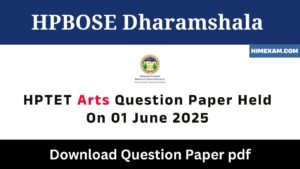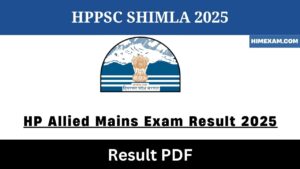Table of Contents
ToggleIndian Economy Question Answer Set-1
||Indian Economy Question Answer Set-1||Indian Economy MCQ Set-1||
1. Which among the following policy of Life Insurance Company is related to regular old-age pension? (A) Jivan Kishore
(B) Jivan Chhaya
(C) Jivan Sanchay
(D) None of these
Explanation:-LIC (Life Insurance Corporation, India) introduces its pension plan to offer individuals with regular income during their old age. Pension also well-known as retirement plans are predominantly intended for the citizens who are disposed to make their old age financially secure. Jeevan Kishore is a children’s plan under which the child becomes the owner of the policy automatically at the age of 18 years. Jeevan Chhaya is beneficial for partner having less than a year old child (not an adopted child). It makes provision for higher education / marriage of the child. Jeevan Sanchay is a without profit money-back plan available for the age group between 14 years and 58 years. LIC’s Jeevan Akshay- VI is a pension plan for people who are at present in their retirement age and have no pension. Under this policy, LIC will pay the policy holders a reliable payment at normal time periods starting right after the holder pays a lump sum premium towards the cost of the policy. The annuitant can accept the payment as per his aspiration either monthly, quarterly, half-yearly or yearly
2. The decimal system of Indian currency was started in
(A) 1950
(B) 1955
(C) 1957
(D) 1960
Explanation:-India became independent on 15 August 1947 and was left with a legacy of non-decimal coinage. One rupee was divided into 16 annas or 64 pice, with each anna therefore equal to 4 pice. In 1957, India shifted to the decimal system, but for a short period both decimal and non-decimal coins were in circulation. To distinguish between the two pice, the coins minted between 1957 and 1964 have the legend “Naya Paisa” (“new” paisa). The denominations in circulation were 1, 2, 5, 10, 20, 25, 50 (naya paise and one rupee which remained as the same pre-decimal value. Therefore pre-decimal coins of one, half and quarter rupees could remain in circulation after decimalisation. The rupee remained unchanged in value and nomenclature. It, however, was now divided into 100 ‘paisa’ instead of 16 annas or 64 pice. For public recognition, the new decimal paisa was termed ‘Naya Paisa’ till 1 June 1964 when the term ‘Naya’ was dropped.
3. Antyodaya Programme is associated with :
(A) liberation of bonded labour
(B) bringing up cultural revolution in India
(C) demands of textile labourers
(D) upliftment of the poorest of the poor
Explanation:-Antyodaya Anna Yojana (AAY) is a centrally sponsored scheme which was launched on December 25, 2000 for one crore of the poorest families. It is an important milestone in providing foodgrains to the poor. It contemplated providing 25 kg. of foodgrains per month at highly subsidized rates of Rs. 2 per kg. for wheat and Rs. 3 per kg. for rice to each Antyodaya family. This scheme reflects the commitment of the Government of India to ensure food security for all, create a hunger free India in the next five years and to reform and improve the Public Distribution System so as to serve the poorest of the poor in rural and urban areas.
4. Which of the following is not a necessary condition for the development of India ?
(A) Capital Accumulation
(B) Resource discovery
(C) Population growth
(D) Technological develop-ment
Explanation:-Rising population can be a virtue or can be vice with regards to economic development of a country. In India, demerits of population growth outweigh its merits. Due to large population size and its rate of growth, our per capita income continues to be stagnant at a low level. Since First Five Year Plan, our national income has increased about 11 times but our per capita income has increased only about three and half times, thanks to the rise in population. Also, large population size has tended to reduce the land man ratio in India which reduces productivity of land and labour. Growing population has also reduced per capita availability of cereals and pulses. Further, due to high growth rate of population, unemployment is assuming monstrous proportions. Lack of employment opportunities outside agriculture, builds pressure on farming as a source of subsistence. Consequently, disguised unemployment in the farming sector is emerging as a serious challenge
5. The Indian economy can be most appropriately described as a :
(A) Capitalist economy
(B) Socialist economy
(C) Traditional economy
(D) Mixed economy
Explanation:-There are primarily two types of economiescapitalist or free market economy and socialist economy. Mixed economy is a median between these two main economies taking some characteristics of either of them. We have adopted mixed economy in India. All the basic industries such as railways, post and telegraph, defence production, atomic energy etc. are in the public sector. Industries dealing with consumer goods are in the private sector. India has a pubic private partnership economy.
6. The Tarapore Committee recommended that before capital account was made convertible the rate of inflation should be brought down for three years to within :
(A) 3.5%
(B) 0.3%
(C) 4.6%
(D) 5.7%
Explanation:-The Tarapore Committee on capital account convertibility had laid down a three year, three phase schedule for allowing convertibility. It laid down three pre-conditions:
(a) fiscal consolidation implying that the centre’s fiscal deficit should come down to 3.5 per cent of GDP;
(b) a mandated inflation target; and
(c) strengthening of the financial system to
(i) involve a near complete clampdown on activities of weak banks,
(ii) major cut in the CRR, and
(iii) complete deregulation of interest rates.
7. What is NABARD’s primary role?
(A) to provide term loans to state co-operative banks
(B) to assist state governments for share capital contribution
(C) to act as re-finance institution
(D) All of the above
Explanation:-NABARD is the apex institution in the country which looks after the development of the cottage industry, small industry and village industry, and other rural industries. Its other functions are: to coordinate the rural financing activities of all institutions engaged in developmental work at the field level and maintain liaison with Government of India, State Governments, Reserve Bank of India (RBI) and other national level institutions concerned with policy formulation; to re-finance the financial institutions which finances the rural sector; to regulate the cooperative banks and the RRB’s, etc. NABARD’s refinance is available to State Co-operative Agriculture and Rural Development Banks (SCARDBs), State Co-operative Banks (SCBs), Regional Rural Banks (RRBs), Commercial Banks (CBs) and other financial institutions approved by RBI.
8. Under which Act/Policy was the BIFR established ?
(A) Industrial Policy of 1980
(B) Companies Act
(C) Sick Industiral Companies Act
(D) MRTP Act
Explanation:-The Board for Industrial and Financial Reconstruction (BIFR) is an agency of the government of India, part of the Department of Financial Services of the Ministry of Finance to determine sickness of industrial companies and to assist in reviving those that may be viable and shutting down the others. It was established under the Sick Industrial Companies (Special Provisions) Act, 1985 (SICA). The board was set up in January 1987 and became functional as of 15 May 1987.
9. What is the maximum amount of investment in the shares of debentures of notified companies like the ICICI, the IDBI etc. that will entitle a rebate in income tax up to 20% of the amount invested?
(A) Rs. 80000
(B) Rs. 60000
(C) Rs. 20000
(D) Rs. 10000
Explanation:-A salaried employee can claim tax rebate under section 88. Amount of tax rebate is 20% of gross qualifying amount (Rs.80000) or Rs. 16000, whichever is lower. If a person invests only in other securities, excluding shares, debentures and units of infrastructure sector; then the maximum rebate is only Rs. 12000 (20% of Rs. 60000). This rebate may be extended upto Rs. 16000 on further investment up to Rs. 20000 in shares and debentures. By investing in shares, debentures and infrastructure units a maximum rebate of Rs. 16000 (i.e., 20% of Rs. 80000) may be claimed.
10. Which authority recommends the principles governing the grantsin-aid of the revenues of the states out of the Consolidated Fund of India?
(A) Public Accounts Committee
(B) Union Ministry of Finance
(C) Finance Commission
(D) Inter-State Council
Explanation:-Finance Commission of India is established under Article 280 of the Indian Constitution by the President of India to define the financial relations between the centre and the state. It is entrusted with the task of distribution of net proceeds of taxes between Centre and the States, to be divided as per their respective contributions to the taxes; determine factors governing Grants-in Aid to the states and the magnitude of the same; and work with the State Finance Commissions and suggest measures to augment the Consolidated Fund of the States so as to provide additional resources to Panchayats and Municipalities in the state
||Indian Economy Question Answer Set-1||Indian Economy MCQ Set-1||
Join Our Telegram Group :- Himexam









